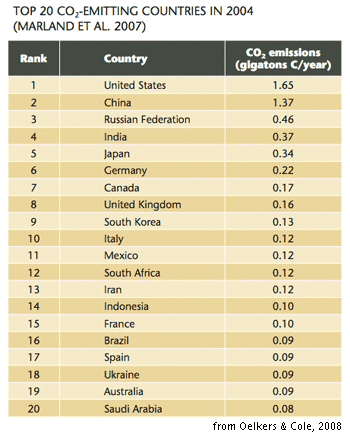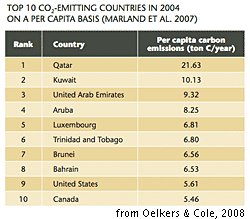  |
|
Your mission, should you decide to accept it . . .
Your Mission is to design a global, comprehensive plan of action to remove and sequester CO2 from the atmosphere in the next two decades.
 The students will subdivide themselves into approximately ten groups to work
on the mission, and present their findings at the end of the semester in front
of the prestigious panel of judges. The groups themselves will be decided on
early in the semester, and attendance at the first class is mandatory. Check
back with this website in September 2009 for building, classroom number, and
syllabus, but most likely it will take place in MIT Building 32-123. For year
2009, class times will be MWF from 3pm to 4pm during the fall semester. The students will subdivide themselves into approximately ten groups to work
on the mission, and present their findings at the end of the semester in front
of the prestigious panel of judges. The groups themselves will be decided on
early in the semester, and attendance at the first class is mandatory. Check
back with this website in September 2009 for building, classroom number, and
syllabus, but most likely it will take place in MIT Building 32-123. For year
2009, class times will be MWF from 3pm to 4pm during the fall semester.
How does Mission 2013 differ from other MIT classes: Due to the special nature of 12.000, students enrolled in the class are allowed to register for up to 57 units. (Other freshmen have a 54-unit credit limit.) The class does not have a Final exam during the Finals week, but it does have a final presentation in early December, and instead of weekly problem sets typically given in Math and Physics classes, there are team research and team presentations as scheduled by the professor and the teams. Also, note that scheduling conflicts preclude students who are taking 12.000 from also registering for Freshman Advising Seminars (FAS). All students who enroll in 12.000 become a part of the Terrascope program and will be advised by faculty affiliated with Terrascope. Students who participate in the Residence Based Advising Program (RBA), will keep their RBA advisor, but also be given a Terrascope/Mission advisor. See the Class of 2013 First Year web site for further details.  History of the Class History of the ClassProfessor Kip Hodges, now at Arizona State University, conceived of the course and supervised it for the first six years. It was offered first in Fall 2000, when the assignment (Mission 2004) was to develop a viable mission plan for the exploration of Mars with the aim of finding evidence for the present or past existence of life. The assignment for Fall 2001 (Mission 2005) was to design undersea research stations for both coral reef and abyssal environments. Fall of 2002 (Mission 2006) charged students with developing a strategy for monitoring and preserving the Amazon Rainforest. As in previous years, the students in Mission 2006 described their final design in a content-rich web site and an oral presentation in front of a panel of international experts. Mission 2007 was focused on Arctic National Wildlife Refuge (ANWR), Mission 2008 - Galapagos, Mission 2009 -Tsunamis and Mission 2010 - Saving N'awlinz, Mission 2011 - Saving our oceans, Mission 2012 - Clean water. |
 |
  |